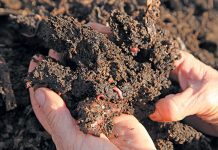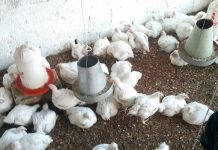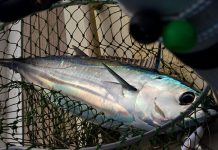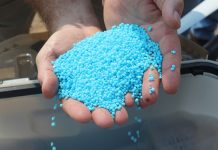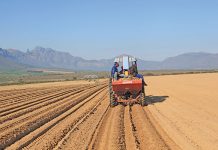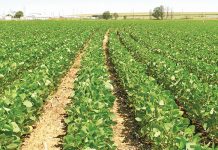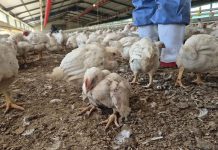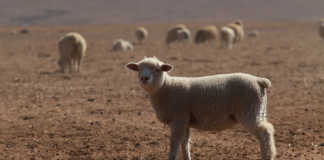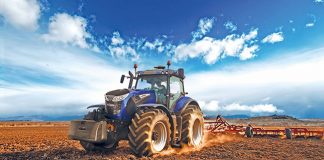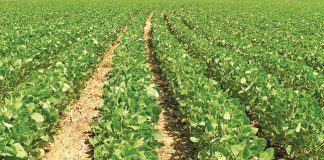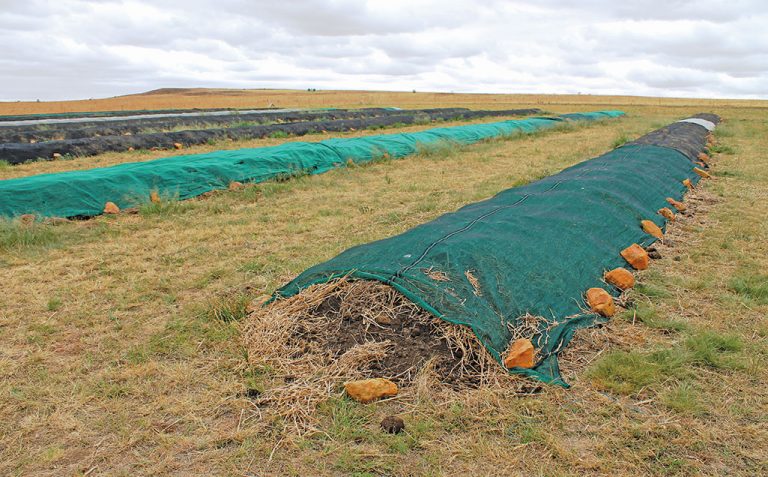
Photo: Lloyd Phillips
Twenty-five years ago, farmer Redge Jelliman was fed up. He had been paying a fortune for chemical fertiliser, yet it had failed to generate the yields he expected from his crops.
Realising the time had come for an alternative, he had his soil analysed in the US, and went on to apply raw livestock manure to his soil instead. In time, he began composting the manure, which significantly improved his soil and yields.
Frustration
“I’d become frustrated with fertiliser advisers constantly telling me that applying more chemical fertiliser to my soil would solve my suboptimal crop yield problem,” Jelliman recalls.
“At that time, I happened to listen to a presentation by a visiting international soil health expert, who urged me to send my soil samples to Perry Agricultural Laboratory in the US.”
Having up until then used only South African soil-testing laboratories, which did not have
the analytical capabilities of laboratories in the US, Jelliman was amazed at the detailed results generated by the Perry laboratory. These revealed an imbalance between the macro- and micronutrients in his soil.
“I remember that one of Perry laboratory’s written comments on the results of their analysis of my soil samples was ‘Why analyse building sand?’ The analysis had found that my soil’s humus levels were only 0,3%. At that time, I didn’t understand the importance of soil humus levels, or the value of soil biology in crop production.”
Based on the soil analysis results, the international soil health consultant advised Jelliman to apply macronutrients, primarily calcium, phosphate and potassium, in conjunction with micronutrients such as boron, zinc, manganese and copper, to his cropping soil to correct the imbalance between the two nutrient types.
Nutrients from feedlots
Unfortunately for Jelliman, he soon discovered that to apply the recommended macronutrients to all of his croplands, both owned and leased, would make a significant dent in his tight budget.
Determined to address the problem, but within his financial resources, he began experimenting with using raw manure as an organic source of phosphate and potassium for his soil. Fortunately, he had access to plenty of manure generated by his cattle and lamb feedlots in the Verkykerskop area of the Free State.
“I learnt that good-quality livestock manure also contains many micronutrients that become available through the animals’ digestion of silage, maize and veld grasses, and also via the bacteria in the rumen,” he says.
For the next five years, he used the manure as a fertiliser, and added additionally required nutrients that were unavailable or insufficient in the manure by applying chemical macro- and micronutrients. He used a tractor-mounted fertiliser spreader to apply dry manure onto the soil surface at about 10m3/ha every three years.
Then Jelliman attended another presentation by ‘Mr Compost USA’, Malcolm Beck, who was visiting South Africa at that time.
He learnt much from Beck’s presentation and also from his book The Secret Life of Compost, and was motivated to first compost his livestock manure before applying it to the soil.
“Beck explained that some nutrients, such as potassium, in uncomposted livestock manure can become toxic in the soil,” says Jelliman. “Composting also adds value to livestock manure by making previously plant-unavailable nutrients in the raw manure plant-available.
“What’s more, the composting process kills off many pathogens, such as E. coli, that might be in the raw livestock manure.”
Importance of humus
For Jelliman, an added appeal of composting the livestock manure was that the compost would help build the humus content of his cropping soil, enable it to better hold nutrients and water, and minimise wind and water erosion.
He subsequently came to learn of, and appreciate, how important humus is for building soil carbon. Healthy soil humus levels promote the development of diversity and populations of beneficial soil life, especially microbes.
“It’s said that increasing a soil’s humus level by 1% increases its water-holding capacity by about 160 000ℓ/ha,” he adds.
While reading up on large-scale composting, Jelliman came across research by US soil biology expert Dr Elaine Ingham, who proved that fungal-dominated compost has the ability to bind calcium to prevent it from leaching out of the soil.
This element is essential for transporting all nutrients throughout crops and other plants. One of these nutrients is boron, which is critical for guiding other nutrients to where they are required in a plant. Boron is also vital for improved pollination.
After discovering this research, Jelliman began concentrating on producing fungal-dominated livestock compost “because soils are already mainly bacterial-dominated”.
In particular, he wanted to promote beneficial fungi in his cropping soil as this would help improve its nutrient balance. This, in turn, would bring soil pH to the ideal level of between 6,0 and 6,4.
“My philosophy is that, if you feed soil with nutrients, biology, compost and vermicompost, no matter what crop you plant, it will feed from the soil. This is unlike chemical-minded farmers, who use the soil as a medium simply to hold the crop plant while it’s being fed chemical fertilisers,” he says.
By the time he semi-retired from farming, Jelliman was making between 3 000t and 5 000t of finished, high-quality compost a year, and applying it to his 1 000ha of cropping soil at an annual rate of 3t/ha to 5t/ha.
During this time, he also began incorporating vermicomposting as part of his larger composting strategy. This uses earthworms to convert organic waste into plant-available compost.
At peak production, the earthworms were producing up to 1 000t of vermicast annually. As this is even more beneficial to soils and plants than conventional compost, Jelliman began applying a mixture of 1t of vermicast and 2t of conventional compost to each hectare of his croplands every year. This further improved the diversity and quantity of beneficial microbes in the soil.
Turning waste into wealth
Any form of animal dung, including chicken litter and slurry from pig and dairy farms, can be used to produce compost.
Plant matter, such as wheat straw and waste silage, can also be used to bulk up the dung, and does not detract from the final quality of the compost.
“I prefer making compost in static heaps of about 30m3 each as opposed to using windrows that are regularly turned by a high-speed compost-turning implement. The static heaps allow for relatively fragile, beneficial fungi to grow well in the developing compost, whereas a compost turner damages the fungal growth,” says Jelliman.
He adds that mixing some dry organic matter, such as kraal manure, into a recently formed static heap is important for achieving the ideal carbon-to-nitrogen ratio (between 10:1 and 15:1) within the heap.
According to Jelliman, making fungal-dominated compost in heaps takes six months from start to finish, compared with only two months required to make bacterial-dominated compost in windrows using a compost turner.
For the first two months, he turns the composting heap once a week using a front-end loader.
If, during this process, he discovers that the heap is too dry, he uses the front-end loader to create a slight depression on the top of the heap into which water and/or livestock slurry can be poured to rehydrate the material. This moisture is essential for the microbial activity required to achieve optimal composting.
During the third and fourth months, the heap is turned every two weeks, and during the fifth and sixth months, it is turned once a month.
At optimal microbial activity, the core temperature within the heap should be between 60°C and 70°C. Jelliman explains that a temperature below 60°C indicates that microbial activity is faltering, while a temperature above 70°C is likely to start killing off the microbes.
Turning a heap to introduce oxygen and adding water usually get the microbes functioning optimally again, while adding water to an overheating heap helps cool the interior.
“From the third or fourth month, the average core temperature of a heap will slowly decline because the microbes have composted the majority of the organic matter. Despite this, the beneficial microbes will still be alive in the composted material that is applied to the soil,” he explains.
Getting compost into the soil
Compost produced on a large scale can be fairly coarse and heavy, and may also contain stones hidden in the raw materials.
According to Jelliman, the most effective implement to apply the compost to croplands is a tractor-drawn spreader trailer fitted with an efficient belt delivery system and heavy-duty spindles.
He adds that the best time to apply the compost is just before or during the annual rainy season so that it is washed into the soil as soon as possible after application.
Farmers with irrigated croplands have the advantage of being able to use their irrigation water to achieve the same outcome.
“Once microbes have been added to a soil via the compost, they must have food to stay alive. Farmers can ensure this by rotating their primary crops with multispecies cover crops
and allowing livestock to graze these cover crops and the crop residue. Any remaining crop residue, together with the urine and dung from the livestock, helps to feed the microbes in the soil.”
A good indicator of healthy diversity and populations of soil microbes is the relatively rapid breakdown of plant residue on the soil surface as the flourishing microbes feed on this material.
Jelliman sends soil samples to Brookside Laboratories in the US for detailed analysis and recommendations. The samples are taken from precisely determined and recorded virtual grids sited across each land.
He also firmly believes in testing samples of chemical fertiliser, compost, and water for their quality and content, as these factors can either improve or impair soil health.
“Even with the addition of organic nutrients, such as compost, to the soil, there may still be the need to supplement these with chemical fertilisers. But then there must be an appropriate balance between these two forms of nutrients.
“Keeping soil biology alive must be the priority. Farmers should also stay away from agricultural practices that overwork the soil,” he says.
Email Redge Jelliman at [email protected].


